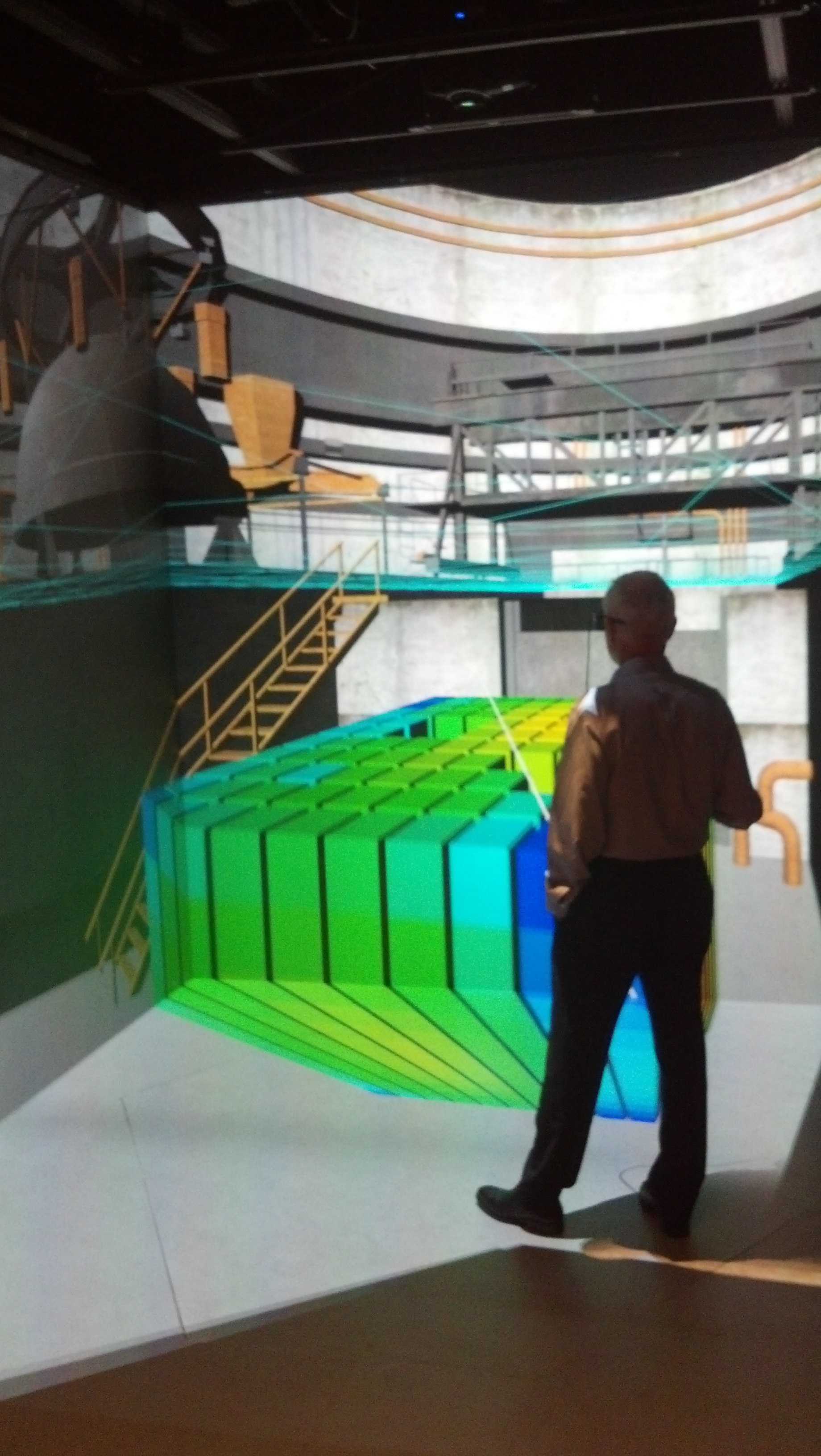The Visionarium
Professor Haghighat of VT's Nuclear Engineering program explores a simulation of spent nuclear fuel in the VT HyperCube

Welcome to Virginia Tech's Visionarium
Here you will find information and documentation relating to our services and the range of visualization equipment available on the Blacksburg campus! We focus on supporting the adoption of supercomputing and visual analysis tools to advance science, engineering, and education. Through our educational and support services, we boost access to and adoption of cutting-edge tools that integrate with researchers’ data, questions, and workflows. Our mission is to:
- Consult and collaborate with researchers to design, develop, and apply advanced visualization technology
- Train students on how develop modern visualization solutions and equipment
- Develop cutting-edge visualization solutions for domain experts / HPC users on a project basis
- Develop additional grants and funding streams with domain experts to include visualization tools and HPC
Access to data is paramount for an effective coupling of centralized resources with distributed researchers. The Visionarium is connected to ARC HPC clusters through the 10Gb VT-RNET. Therefore, we also engage in the development of software infrastructures that support faculty across domains and use-cases. This includes software install and support and webservices tools for data translation, manipulation, and visualization. Contact us with your ideas!
From the desktop to stereo walls to the fully immersive environments, integrated information spaces can aid scientists’ discovery and communication – interactive visual analysis enables users to apprehend non-obvious information and relationships. For example in many dynamic systems, structure and function are related. In order to understand these systems then, spatial, abstract, and temporal information must be available and presented concurrently and on demand. Information-Rich Virtual Environments (IRVEs) address this problem of effectively delivering heterogeneous information to multiple platforms.
Still, the visualizations chosen and the display form factors also varies to the research question being asked; the Visual Computing Group provides the necessary expertise to leverage the latest technologies and University resources. Members of the Visual Computing Group actively participate in the development of International Standards for networked 3D graphics and visualization systems (e.g.Web3D Consortium, ISO, W3C, DICOM, Open Geo-spatial Consortium). The Visual Computing Group connects researchers and their data through:
- Deployment of visualization tools for various domains
- Development of software suites and tools
- Consulting and HCI/Human Factors evaluation
- Development of grant proposals


